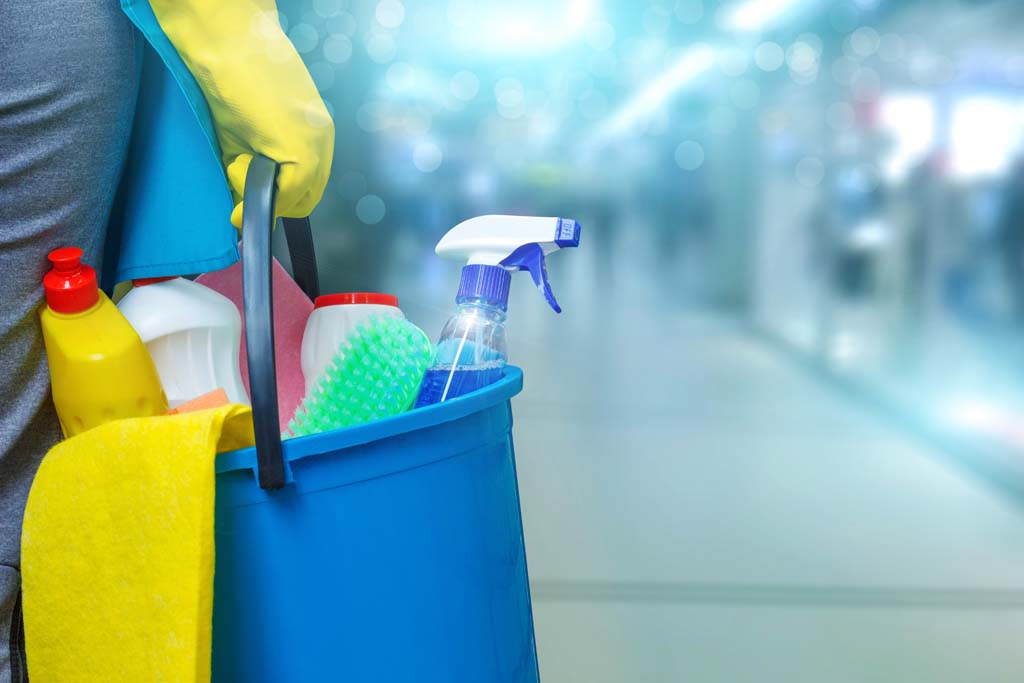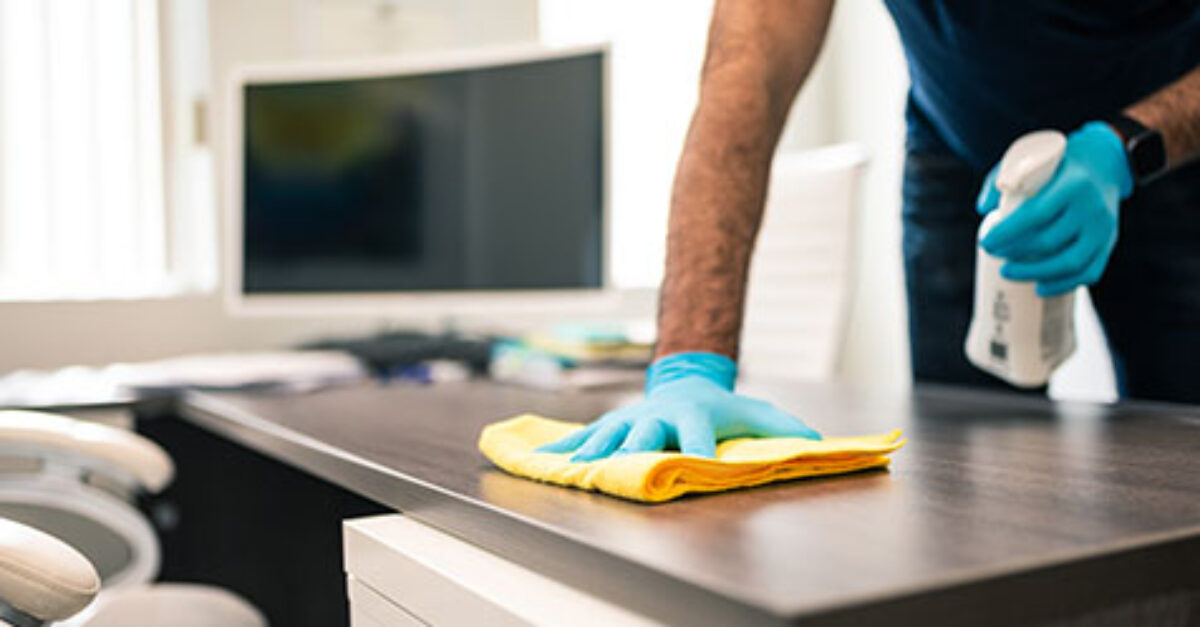Comprehending the Requirement for Completely Decontaminating and Disinfecting Regularly Touched Surface Areas in High-Traffic Areas
In the realm of public health and safety and security, the thorough sanitation and sanitization of often touched surfaces in high-traffic locations stand as extremely important actions in protecting against the spread of unsafe virus. The value of this practice prolongs far past plain tidiness, diving right into the world of illness avoidance and area well-being. By discovering the various facets of surface sanitation, from the dangers connected with overlooking cleansing methods to the efficient methods that can be used, a clearer understanding arises of the important duty these methods play in safeguarding public health. As we navigate this conversation, it ends up being apparent that the effects of extensive surface area sanitation reverberate not only within the boundaries of a certain atmosphere but likewise resonate on a wider scale, impacting the health and safety of people across diverse common setups.
Significance of Surface Area Disinfection
Highlighting the complete disinfection of high-traffic surface areas is vital in maintaining a sanitary setting and avoiding the spread of harmful microorganisms. High-touch surfaces such as door manages, light switches, elevator buttons, and counter tops work as breeding grounds for microorganisms and viruses. Routine sanitation of these surface areas is necessary to reduce the risk of contamination and transmission of illnesses.
By executing a robust sanitation protocol, companies and institutions can create a much safer setting for clients, site visitors, and employees. Proper surface area disinfection not just mitigates the spread of infectious diseases however also imparts confidence in the sanitation and safety and security of the facilities. This positive strategy shows a commitment to wellness and wellness, which is specifically vital in high-traffic locations where the likelihood of direct exposure to microorganisms is heightened.
Moreover, surface area disinfection plays a vital function in general infection control methods. Incorporated with hand hygiene techniques, putting on masks, and maintaining physical distancing, detailed sanitation of high-touch surfaces forms a thorough defense against the transmission of hazardous microbes. Focusing on surface area disinfection is a vital part of an alternative strategy to health and wellness in shared rooms.
Risks of Ignoring Cleaning Practices
Ignoring comprehensive disinfection of high-traffic surfaces substantially increases the danger of bacterial and viral contamination, presenting a major risk to the health and wellness of individuals frequenting these rooms. Failing to carry out appropriate cleansing techniques can lead to the buildup and spread of harmful pathogens, including bacteria and infections, on regularly touched surface areas such as doorknobs, hand rails, lift buttons, and counter tops.

In addition, ignoring the significance of comprehensive cleaning not only endangers the wellness of individuals yet also weakens efforts to keep a hygienic and clean environment. It is important to acknowledge the relevance of correct sanitation protocols in stopping the spread of infections and guarding public health.
Reliable Sanitation Techniques
To keep optimal tidiness and reduce the danger of contamination on high-traffic surfaces, using efficient disinfection approaches is vital. One of the most reliable and common sanitation techniques is making use of chemical anti-bacterials. These items can differ in strength and make-up, with some targeting details pathogens like microorganisms or infections. It is vital to comply with the manufacturer's guidelines for appropriate dilution, call time, and air flow when making use of chemical disinfectants to guarantee their performance - Scrub the Surfaces.
An additional reliable approach is the use of UV-C light. UV-C light has actually been shown to be effective in eliminating a vast variety of microorganisms by disrupting their DNA structure, therefore preventing them from replicating. It is important to make use of UV-C light effectively, making Get More Info certain that the proper strength and direct exposure time are used to accomplish the desired sanitation outcomes.
In addition, utilizing steam cleansing as a sanitation technique can be highly efficient, especially on surface areas that are heat-resistant. Steam can pass through permeable surfaces and kill microorganisms, viruses, and various other microorganisms effectively. When making use of steam cleansing, it is important to make certain that the surface gets to the needed temperature level for a sufficient quantity of time to guarantee appropriate disinfection.
Effect On Public Wellness
The maintenance of high criteria of cleanliness and sanitation on high-traffic surfaces plays an important role in securing public health. Regularly touched surfaces in locations with high footfall, such as doorknobs, hand rails, lift buttons, and toilet facilities, serve as reproducing premises for hazardous microorganisms. Failing to effectively decontaminate these surfaces can result in the fast spread of infectious conditions within communities. By carrying out comprehensive sanitation methods, the risk of transmission of viruses, germs, and various other bacteria can be dramatically reduced.
In high-traffic locations like airport terminals, schools, health centers, and public transport systems, the effect of strenuous disinfection actions can not be downplayed. Prioritizing the sanitization of regularly touched surfaces is an aggressive technique to promoting public wellness and improving the safety and security of individuals in common spaces.
Applying Routine Cleaning Procedures
Without delay setting up and adhering to a constant schedule of cleaning methods is extremely important for keeping the cleanliness and safety and security of high-traffic surfaces. Routine cleansing protocols are essential in protecting against the build-up of germs and virus on often touched surface areas, especially in locations with high foot website traffic. By implementing a systematic method to cleaning, organizations can effectively decrease the danger of illness transmission and create a much healthier atmosphere for staff members, customers, and the general public.
To develop an effective cleaning routine, it is important to determine high-traffic areas that require frequent interest. These locations might consist of doorknobs, hand rails, lift switches, washroom facilities, and common tools. Implementing a routine cleaning program that targets these surfaces multiple times a day can substantially lower the spread of harmful bacteria and viruses.
Additionally, making use of appropriate cleaner and disinfectants is key to making certain that surface areas are extensively disinfected. Normal training of cleansing staff on proper cleaning techniques and the significance of adherence to the cleaning schedule is also crucial look these up in preserving a hygienic environment. By prioritizing consistent cleansing protocols, organizations can advertise the wellness and wellness of individuals that connect with these high-traffic surface areas.

Verdict
In verdict, it is essential to prioritize complete sanitation and sanitization of frequently touched surfaces in high-traffic areas to avoid the spread of damaging pathogens and preserve public wellness. Disregarding correct cleansing techniques can raise the threat of contamination and transmission of conditions. By applying normal cleansing methods and making use of reliable sanitation techniques, we can produce a much safer environment for everybody (Clear Out Any Clutter). It is important to recognize the significance of keeping tidy surface areas in high-traffic areas to guarantee the well-being of the area.
In the realm of public wellness and security, the meticulous sanitation and sanitization of frequently touched surface areas in high-traffic areas stand as extremely important read this post here steps in avoiding the spread of harmful microorganisms. By exploring the different facets of surface area sanitation, from the dangers associated with ignoring cleaning procedures to the reliable techniques that can be used, a clearer understanding arises of the vital function these techniques play in protecting public wellness.Additionally, using vapor cleansing as a disinfection technique can be very effective, particularly on surface areas that are heat-resistant. When using heavy steam cleansing, it is important to guarantee that the surface area gets to the required temperature for an enough quantity of time to guarantee appropriate sanitation.
In verdict, it is essential to prioritize detailed disinfection and sanitization of frequently touched surfaces in high-traffic locations to stop the spread of damaging microorganisms and keep public wellness.